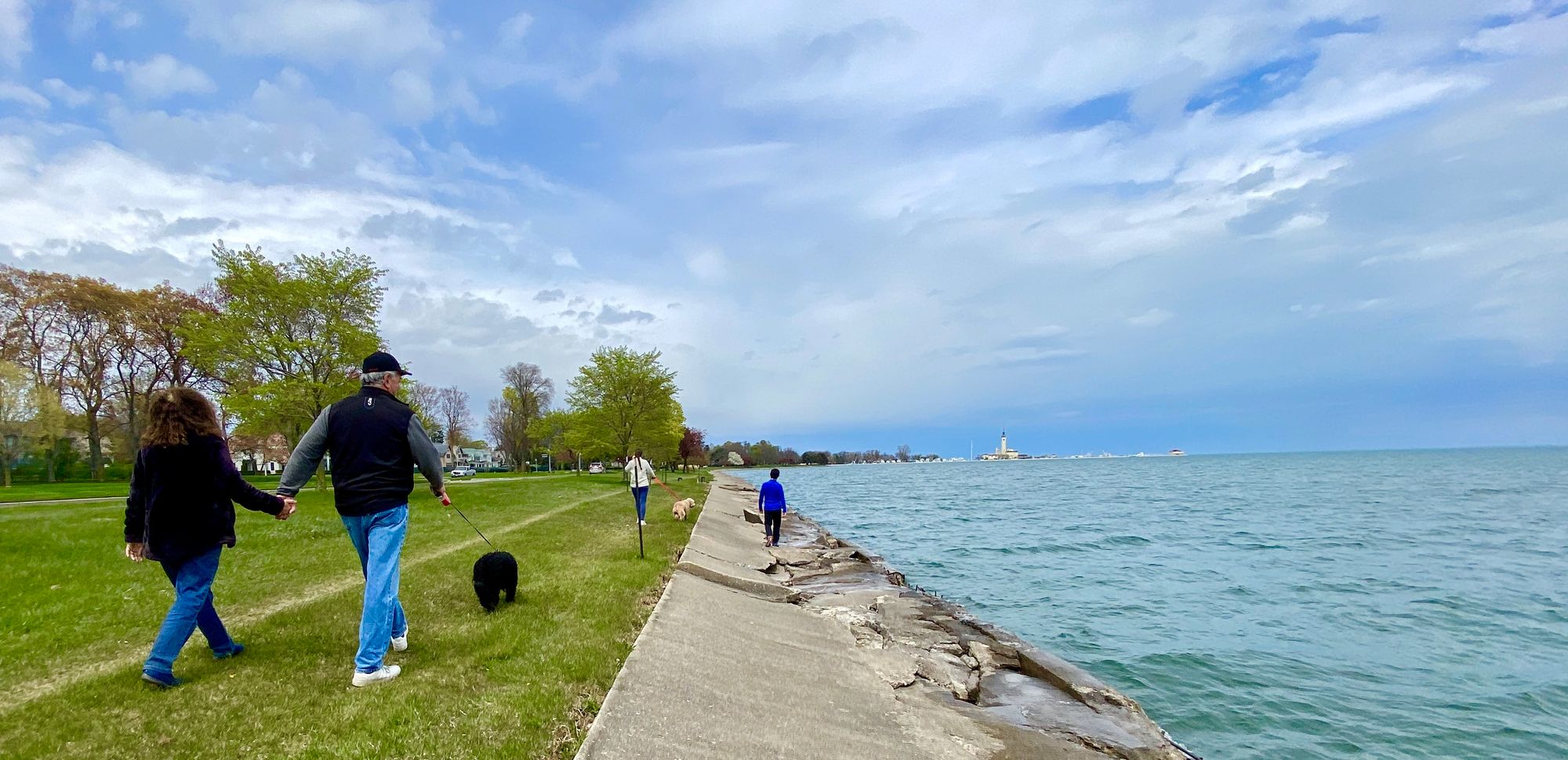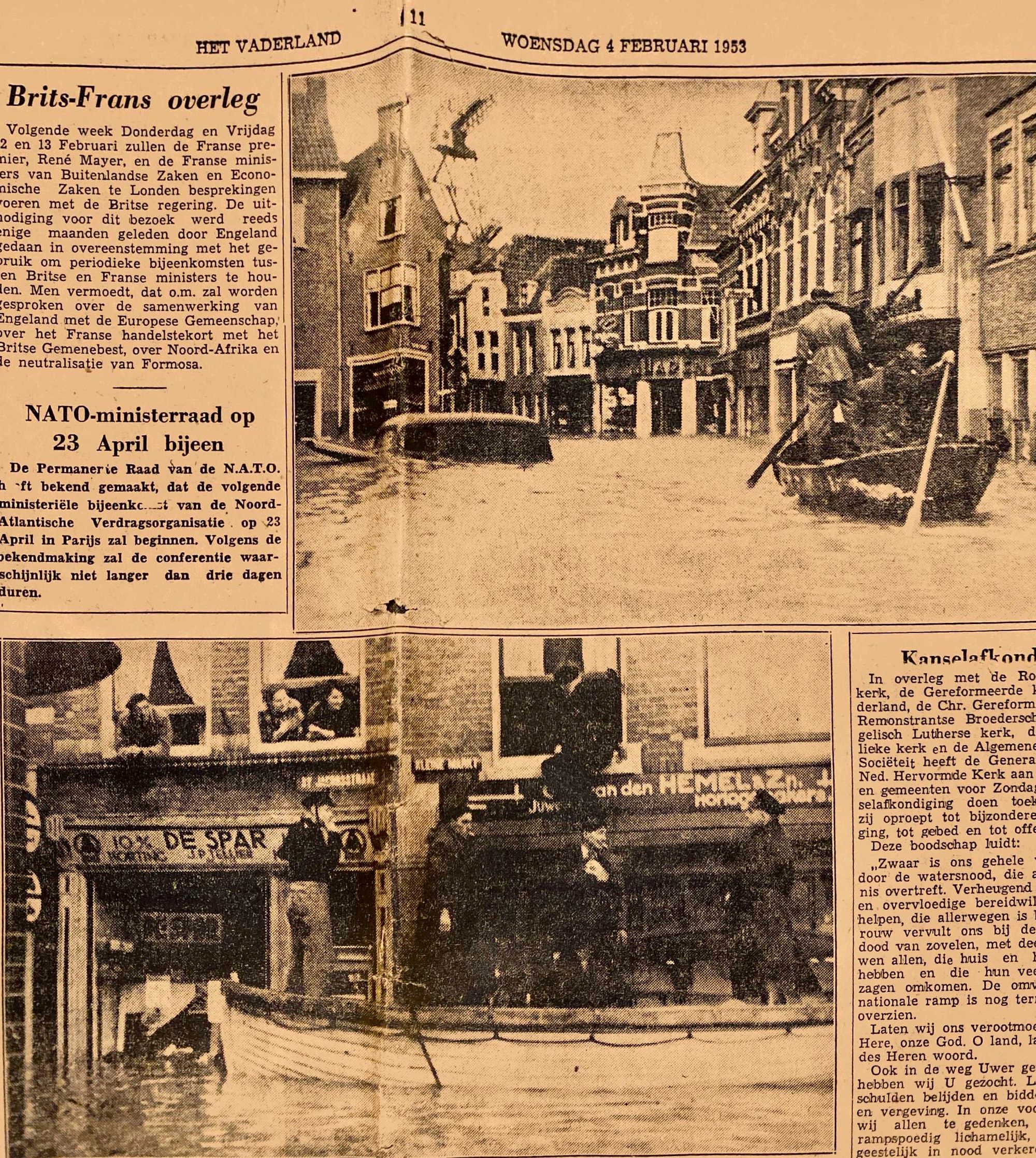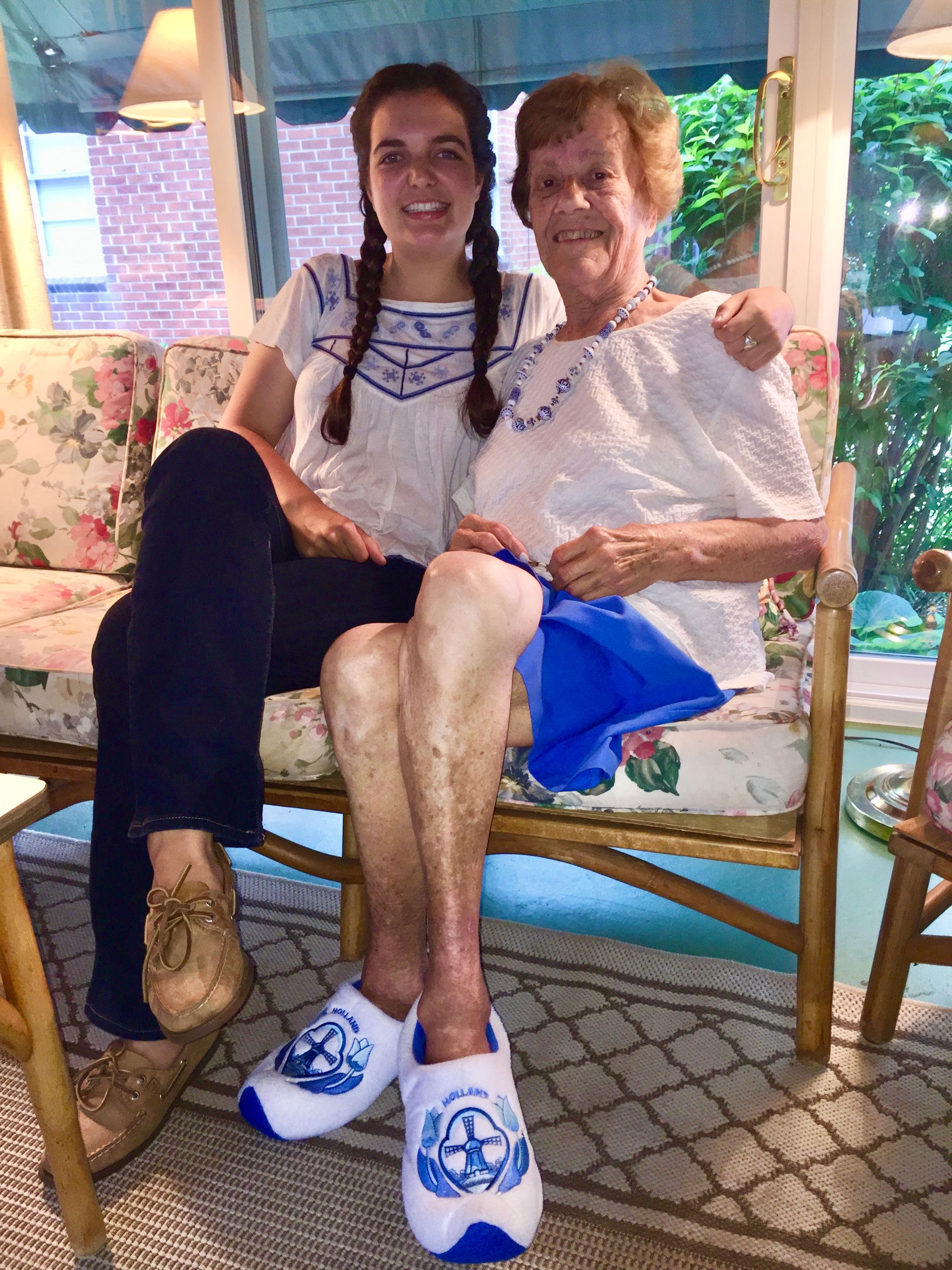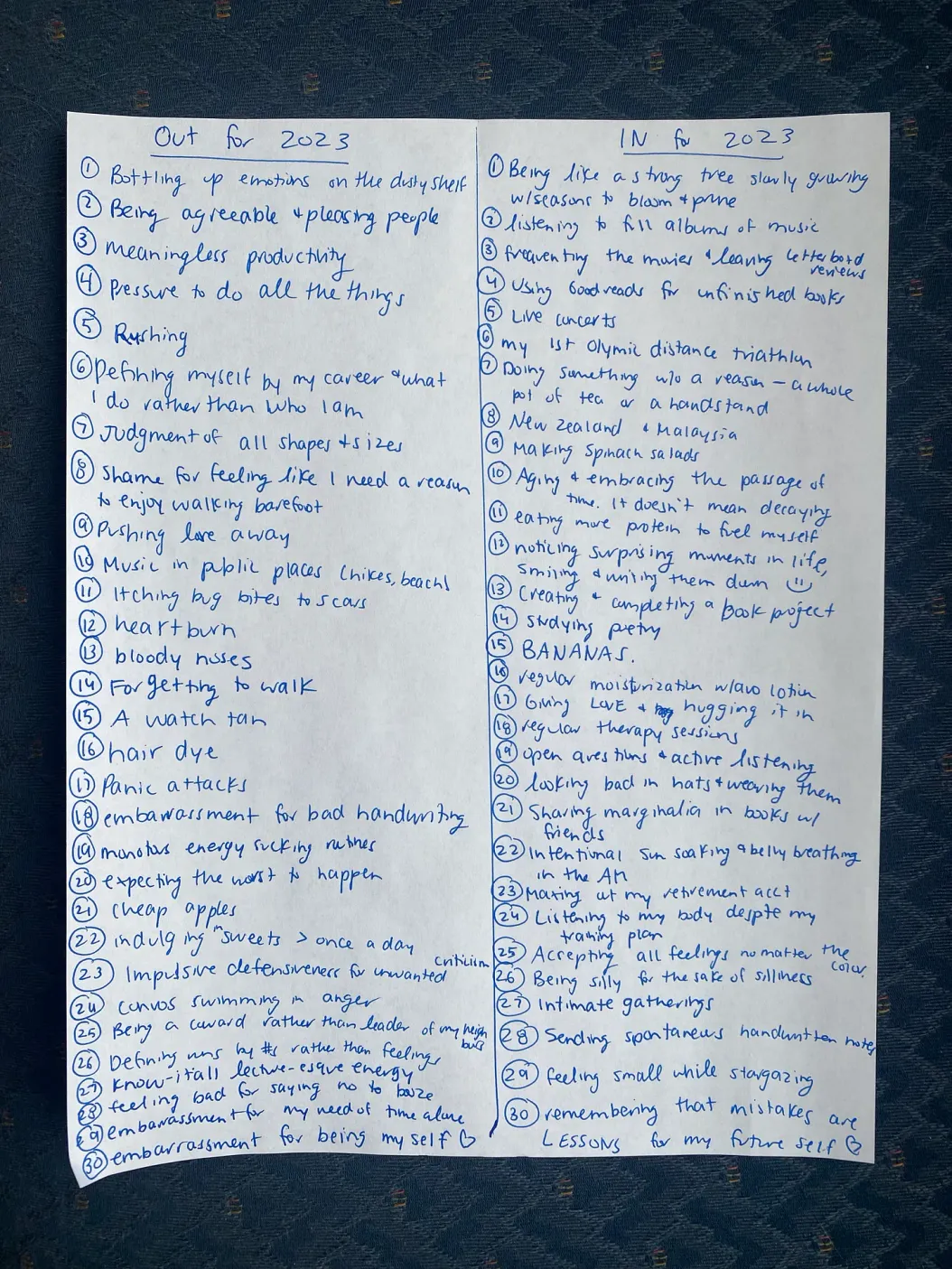Hello fellow learner,
Greetings from Grosse Pointe, Michigan 👋👋
Here is letter #7 from a learn-it-all, enjoy!
Happy mother’s day to all the loving moms out in the world! Sending virtual hugs your way 💓
There was one hour today that it wasn’t raining, so my family went on a three-mile stroll. We walked along Lake St. Claire with our two golden doodles, Paisley and Polo. It consisted of a glimpse of sunshine, a rolled ankle, sandy wet dogs, a search for sticks to play fetch, and painful burrs. All-in-all it was a hoot, and I am beyond grateful for the joy my family brings me and to be living by a lake.

As you can see my family walk “together” isn’t actually very together. We all walk dispersedly at different paces. This picture encompasses much of the dynamic of my family. Each of us tends to march to our own beat.
Some things I’ve learned through...
Doing
I’ve been helping my parents sort through and empty my grandma’s house that will be sold this Tuesday. While I was wrapping up glassware with newspaper, I came across a Dutch edition from February 1953. It showed pictures of the flood that happened across The Netherlands at the time due to the high tides of a storm from the North Sea. It is known as “Watersnoodramp” when 2,100 people died and is considered one of the biggest natural disasters in the country. The estimation is that 30,000 animals drowned and 47,300 buildings were damaged.

You can see in the pictures people climbing out of the upper floors of their houses to be transported by boat. This explains the context of how the dutch live by having to cooperate with each other to live. This concept is illustrated by the “Polder Model” where the country has to work together to maintain their dikes in order to better protect themselves from water. It is no coincidence that the country has a multitude of canals and windmills. They serve as part of a system to manage the water to create land despite being below sea level.
It was a horrific period for the whole country that my grandparents lived through before emigrating to the US shortly after. My grandma was not a hoarder, so it certainly goes to show that she saved this newspaper intently.
Writing
I wrote about taking a walk down memory lane with my grandma who I call Omi. I watched her memory fade away as a consequence of the treacherous disease of Alzheimer’s. The worst part of losing your memory is that you forget who you are and you lose your ability to learn. Without learning, we cannot be humans. What it means to be human is to be able to learn, remember, and improve.

What would life be like without memory? Our memory allows us to reflect and improve to become better humans. Without the ability to remember we cannot learn and this disconnect forces us to not feel like we are living. We should be grateful for our brains. They allow us to live and love life through learning.
Listening
I listened to James Clear and Sam Harris converse about creatures of habits.
There is a misalignment between bad habits that have immediate outcomes while good habits have delayed gratification. The cost of good habits is in the present and the cost of bad habits is in the future. Choose to help your future self with good habits.
As a general rule, the more immediate pleasure you get from an action, the more strongly you should question whether it aligns with your long-term goals.
James walked us through an example of his four rules with how to make a habit of meditating:
- Make it obvious. Optimize the environment of where you meditate. You could potentially need a new environment. There are behavioral biases for different places like with a couch it can be challenging to combat against watching TV. Try having an implementation intention. I will do “X action" at "Y location" at "Z time". Filling out the sentence creates clarity and you don’t need to rely on your motivation.
- Make it attractive. Choose to do what fits your preference. Either listen silently to your breath or have a facilitator guide you. First, fall in love with the habit, then you can try a different version or intensity.
- Make it easy. Scale it down. First master the habit of showing up to meditate for 60 seconds. You first need to create the standard of showing up and have the raw material to work with before optimizing.
- Make it satisfying. It feels good to measure your progress. In someway, visualize your progress by checking off a box on a calendar. This creates more reasons to continue and sustain your habit.
Watching
I watched a YouTube video explaining The Habits Marcus Aurelius Practiced Everyday created by Ryan Holiday. What blows my mind is the quantity of what he accomplished in his life with all the different hats he wore—king, philosopher, writer, husband, father. What I learned is that Marcus kept to a simple routine that was in alignment with his life principles.
Marcus made time for reading because he knew he had to read to lead and was always studying to get better. He sought out time for stillness to think and clear his mind through journaling and other mindful practices. We are what we repeatedly do, so let’s practice good habits. What are our systems and principles that we live by every day?
Reading
I read Why books don't work by Andy Matuschak who is a software engineer, designer, and researcher that works on technologies that expand what people can think and do.
I learned about how books and lectures both make implicit assumptions about how all people learn. Books have been inherited with sentences, pages, and chapters since the beginning of time, so it is hard to question that this assumption is false.
Lectures don’t work because the medium lacks a functioning cognitive model. It’s (implicitly) built on a faulty idea about how people learn—transmissionism—which we can caricaturize as “lecturer says words describing an idea; students hear words; then they understand.” When lectures do work, it’s generally as part of a broader learning context (e.g. projects, problem sets) with a better cognitive model. But the lectures aren’t pulling their weight. If we really wanted to adopt the better model, we’d ditch the lectures, and indeed, that’s what’s been happening in US K–12 education. With our intuitions primed through lectures, we’ll see that books, as a medium, reflect the same flawed ideas about how people learn.
As a result of reading Andy’s piece, the following questions have been sparked:
- How can books be redesigned to improve understanding?
- How do I know when I understand something?
- When am I passively reading that I could be actively reading?
- What other implicit assumptions am I making about what I use and learn on a daily basis?
- How can nonfiction inspire wonder and emotional connection rather than indifference?
Word to define
Mother: a selfless, loving human who must sacrifice many of their wants and needs for the wants and needs of their children. A mother works hard to make sure their child is equipped with the knowledge, skills, and abilities to make it as a competent human being. Being a mother is perhaps the hardest, most rewarding job a woman will ever experience.
What mother means for me: She knows how to soothe, comfort, and protect me. She is generous with all that she has and gives more than anyone else to be caring.
What does mother mean for you?
Quote to inspire
“Working hard for something we don’t care about is called stress; working hard for something we love is called passion.” -Simon Sinek
Question to ponder
We live much of our life through our everyday routines. What is important to you that you want to ensure is in your life? What could you leave out?
I appreciate you reading this! If any of the ideas resonated or you have comments to improve your experience, feel free to reach out to me at vermetjl@gmail.com or Twitter @JenVermet
Never stop learning 😃
Until next week,
Jen

